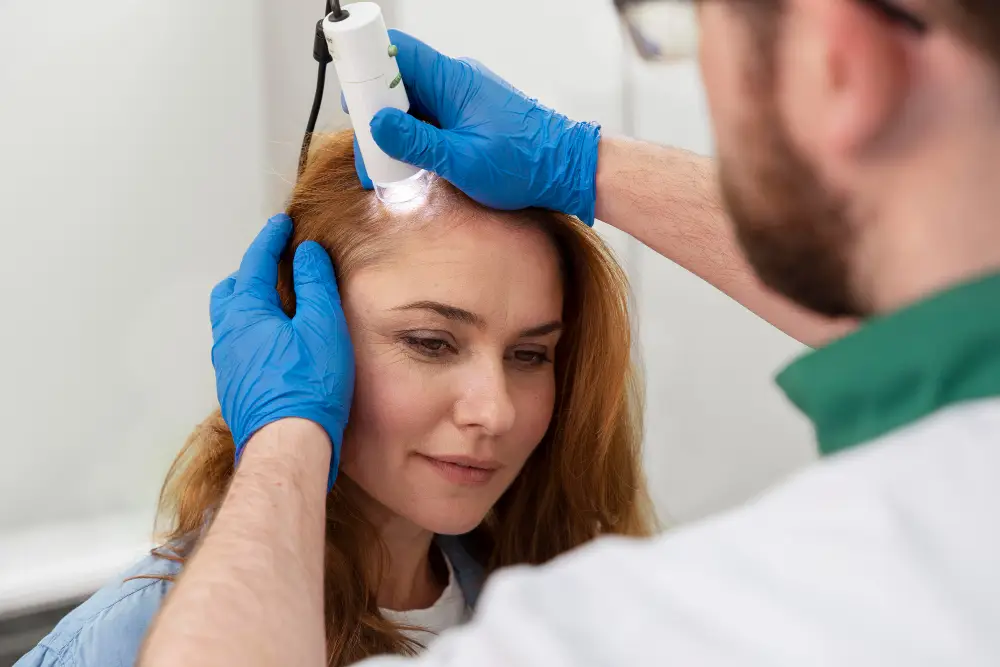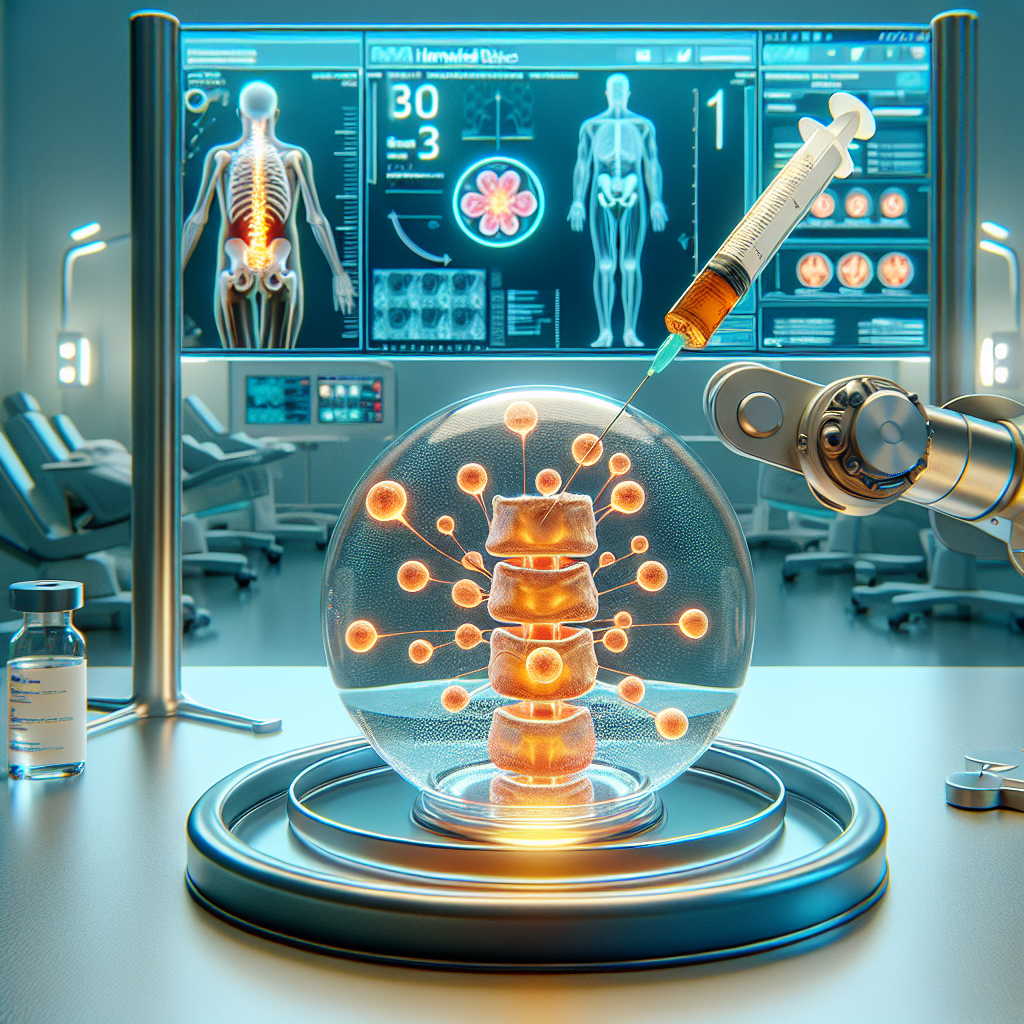
Stem Cell Treatment for Herniated Disc: Navigating Your Options for Lasting Comfort
Key Takeaways for Your Journey to Spinal Wellness
- Understanding Herniated Discs: Chronic spinal pain from a herniated disc can severely impact quality of life, often leading to a frustrating cycle of temporary relief.
- Exploring Regenerative Pathways: Learn about stem cell therapies, particularly autologous mesenchymal stem cell injections, as a potential avenue for intervertebral disc regeneration and long-term spinal pain relief, informed by ongoing research.
- The Colombia Advantage: Discover why Pereira, Colombia, is emerging as a trusted destination for advanced regenerative care, offering a blend of modern medical infrastructure, highly-trained professionals, and comprehensive patient support.
- Overcoming Hesitations: We address common concerns about safety, efficacy, logistics, and cost of international medical care, providing clear, fact-based insights to empower your decision.
- Your Personalized Path: The team at Regencord in Pereira, Colombia, is dedicated to patient education and support, guiding you through a transparent process from initial inquiry to post-treatment care.
Introduction: Beyond the Pain – Seeking Deeper Solutions
Living with a herniated disc can be a relentless challenge, a constant reminder of discomfort that impacts every aspect of your life – from simple movements to your overall sense of well-being. For many, the journey to finding relief involves a frustrating cycle of temporary measures, often leaving them feeling unheard and without a lasting solution. We understand this journey intimately, the frustration of chronic spinal pain, and the desire for effective, long-term options that go beyond masking symptoms.
At Regencord in Pereira, Colombia, our mission is to empower you with knowledge and support, offering a clear, ethical pathway toward understanding advanced regenerative approaches for intervertebral disc regeneration and spinal pain relief. This guide is designed not just to inform, but to provide clarity and instill confidence as you explore innovative possibilities, focusing on what truly matters: your long-term health and mobility. We’re here to help you navigate this complex landscape, ensuring you have the information needed to make a decisive, informed action for your future.
The Stakes: Understanding the Impact of a Herniated Disc
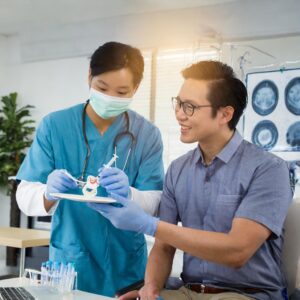
A herniated disc occurs when the soft, gel-like center of an intervertebral disc pushes through a tear in the tougher outer casing, often irritating nearby nerves. This can lead to a range of symptoms, from localized back or neck pain to radiating pain, numbness, or weakness in the arms or legs, a condition commonly known as sciatica when affecting the lower back and legs.
The impact of a herniated disc extends far beyond physical discomfort. It can severely limit daily activities, affecting work, hobbies, and even sleep. Chronic pain contributes to emotional distress, anxiety, and a diminished quality of life. The U.S. National Institutes of Health (NIH) emphasizes that disc degeneration, which can lead to herniation, is a common cause of lower back pain and can significantly impair an individual’s functional capacity and overall well-being. According to the World Health Organization (WHO), musculoskeletal conditions, including low back pain, are a leading cause of disability worldwide, underscoring the critical need for effective treatment strategies.
What Happens When a Disc Herniates?
- Pain: Often sharp, burning, or aching, localized or radiating.
- Numbness or Tingling: Sensations in the area served by the affected nerve.
- Weakness: Muscles controlled by the affected nerve may weaken.
- Reduced Mobility: Stiffness and difficulty with certain movements.
For many, the persistent nature of this pain can lead to a profound sense of helplessness and a yearning for solutions that target the root cause, rather than just managing symptoms. This deep yearning often leads individuals to explore regenerative options.
The Conventional Approach to Herniated Disc Care in the USA

In countries like the USA, the standard pathway for managing a herniated disc typically begins with conservative treatments. These are often guided by recommendations from bodies such as the U.S. Food and Drug Administration (FDA) for approved medications and the NIH for general treatment guidelines, focusing on symptom management and pain reduction.
Initial Conservative Treatments:
- Physical Therapy: Exercises to strengthen core muscles, improve flexibility, and posture.
- Medication: Over-the-counter pain relievers, muscle relaxants, or anti-inflammatory drugs.
- Epidural Steroid Injections: Injections directly into the spinal canal to reduce inflammation and pain, offering temporary relief.
While these approaches can be effective for some, many patients find themselves in a cycle where relief is temporary, or the underlying disc issue persists. When conservative treatments fail, surgery (such as discectomy or spinal fusion) may be recommended. While often effective in relieving nerve compression, surgery is invasive, carries its own risks, and involves a significant recovery period, which can be daunting for many patients.
This reality often leaves patients feeling frustrated and exhausted, searching for alternatives that offer the promise of intervertebral disc regeneration and longer-lasting spinal pain relief without the invasiveness of surgery. The drive to seek more patient-centric and potentially less aggressive interventions is a common motivator for exploring new treatment horizons.
The Pereira, Colombia Advantage: A New Horizon for Spinal Care
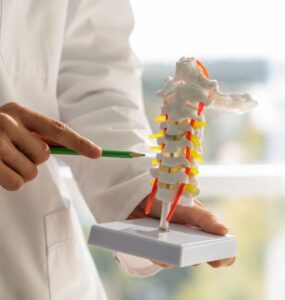
For individuals seeking advanced regenerative pathways for herniated disc pain, the team at Regencord in Pereira, Colombia, offers a compelling option. Beyond the specific treatments, the very environment and approach to care in Pereira present a distinct advantage.
Navigating chronic spinal pain often involves a cycle of temporary fixes and escalating frustration, leading patients to explore options beyond conventional pathways. Our deep understanding of this journey reveals that patients aren’t just seeking a procedure; they’re searching for comprehensive support, clear communication, and a medical experience that respects their individual needs and anxieties, especially when considering care abroad. This holistic approach, often overlooked in high-volume systems, is foundational to rebuilding trust and facilitating true healing.
Why Consider Pereira for Regenerative Disc Care?
- Robust Healthcare Infrastructure: Colombia boasts a modern and evolving healthcare system with facilities that adhere to international standards. Institutions are often equipped with advanced diagnostic and treatment technologies. The Colombian Ministry of Health and Social Protection, alongside INVIMA (the National Food and Drug Surveillance Institute), oversees and regulates healthcare services and medical products, ensuring a structured and accountable environment for patient care.
- Highly-Trained Medical Professionals: Colombian physicians and medical teams often receive training comparable to international standards, with many having international experience and affiliations. There is a strong emphasis on continuous medical education, ensuring practitioners are up-to-date with medical advancements, including those in regenerative medicine.
- Patient-Centric Approach: The unique advantage of seeking regenerative care in Pereira, Colombia, extends beyond cost-effectiveness. It lies in the integrated ecosystem: a blend of modern medical infrastructure, highly-trained professionals, and a naturally supportive environment conducive to recovery. Patients frequently express relief in finding an environment where personalized attention isn’t a luxury but the standard, coupled with logistical support that demystifies international travel, transforming a potentially daunting journey into a streamlined, empowering experience. The Regencord team prioritizes clear communication, empathy, and individualized care plans.
- Holistic Healing Environment: Pereira, nestled in Colombia’s Coffee Region, offers a tranquil and recovery-friendly setting. The lush natural surroundings and agreeable climate can contribute positively to a patient’s overall well-being and recovery process, providing a calm respite from the stresses of daily life.
- Logistical Support & Value: For international patients, the Regencord team provides comprehensive support, assisting with travel arrangements, local accommodation, and on-the-ground logistics. While insurance coverage for international regenerative treatments typically varies, the comprehensive cost of advanced care in Colombia can often present a significant value compared to out-of-pocket expenses for similar pathways in other regions, especially when considering the personalized attention and supportive environment.
Choosing to seek care abroad is a significant decision, and the team at Regencord in Pereira is dedicated to making this journey as seamless, transparent, and supportive as possible. Our focus is on empowering you with information and facilitating an experience that puts your healing first.
Our Regenerative Philosophy & Approach for Disc Health
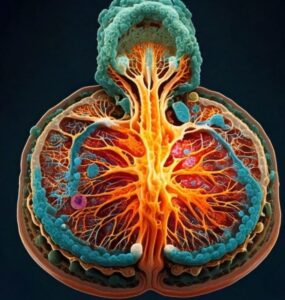
Our philosophy at Regencord centers on understanding the body’s intrinsic ability to heal and supporting these natural processes with advanced, evidence-informed regenerative strategies. For a condition like a herniated disc, this means looking beyond symptomatic relief towards promoting intervertebral disc regeneration and long-term spinal pain relief.
Understanding Stem Cell Therapy for Herniated Discs
Stem cell therapy, particularly using autologous (derived from your own body) mesenchymal stem cells (MSCs), represents a promising avenue in regenerative medicine. The U.S. National Institutes of Health (NIH) and numerous PubMed-indexed peer-reviewed journals extensively document ongoing research into MSCs’ potential to differentiate into various cell types, modulate inflammation, and secrete growth factors crucial for tissue repair. For disc herniation, the goal is to harness these properties to:
- Support Disc Regeneration: MSCs are thought to contribute to the regeneration of damaged disc tissue, potentially restoring some of the disc’s structural integrity. Studies highlighted on ClinicalTrials.gov show various phases of research exploring this potential.
- Reduce Inflammation: Stem cells possess immunomodulatory properties, which can help reduce the chronic inflammation often associated with herniated discs and nerve compression, contributing to spinal pain relief.
- Promote Healing Environment: By secreting bioactive molecules, stem cells can create a microenvironment conducive to the body’s own healing mechanisms.
Our approach at Regencord focuses on a meticulous evaluation of each patient to determine suitability for these regenerative pathways. We emphasize education, ensuring you understand the science, the potential biological mechanisms, and the realistic expectations surrounding autologous stem cell injection for herniated discs. Our commitment is to responsible application, grounded in ongoing scientific understanding, and a clear, ethical framework. We believe in transparency and patient empowerment, guiding you through a process that respects the evolving nature of regenerative medicine while focusing on your individual needs for disc health.
Introducing: The Regencord Spinal Wellness Planner: Your Journey Guide
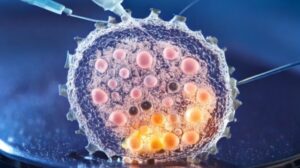
To help you navigate the complexities of considering advanced regenerative care, especially when traveling internationally, the team at Regencord has developed “The Regencord Spinal Wellness Planner: Your Journey Guide.” (In Spanish, culturally referred to as “El Camino Hacia el Bienestar Espinal: Guía del Paciente Regencord”).
This practical resource is designed to demystify the process and equip you with a step-by-step checklist, ensuring you feel prepared and supported at every stage. It covers essential considerations from initial inquiry to post-treatment care and beyond.
Inside Your Planner, You’ll Find:
- Pre-Journey Preparation Checklist: Guidance on medical records, travel documents, and initial consultations.
- Logistics Made Easy: Tips and assistance for flights, accommodation in Pereira, and local transportation.
- Understanding Your Procedure: Clear explanations of the regenerative process, what to expect during your stay, and recovery guidelines.
- Post-Care & Follow-Up: Information on continued support and communication once you return home.
- FAQs & Resources: Answers to common questions and helpful links to authoritative health information.
Our goal is to transform what might seem like a daunting journey into a manageable, empowering experience. This planner is a testament to our commitment to comprehensive patient support and ensures that your focus can remain on your health and recovery.
Overcoming Common Hesitations: Why Seeking Clarity is a Strategic Advantage
Considering an innovative treatment like stem cell therapy for a herniated disc, especially abroad, naturally brings forth questions and concerns. It’s a significant decision, and the team at Regencord understands these hesitations. Addressing them directly with clarity and verifiable facts is key to making an informed choice for your spinal pain relief.
1. “Is Stem Cell Treatment for Herniated Discs Experimental or Unproven?”
Clarity & Trust: It’s true that regenerative medicine is a dynamic and evolving field. While the promise is significant, responsible application requires a clear understanding of the science. We focus on autologous mesenchymal stem cell (MSC) approaches, which are extensively studied for their biological mechanisms in tissue repair and anti-inflammatory properties, as noted in ongoing research tracked by the NIH and published in PubMed-indexed journals. Our commitment is to educate you on the scientific understanding behind these regenerative pathways, differentiating between established biological principles and unverified claims. We prioritize patient suitability and comprehensive understanding, ensuring you are fully informed about the current scientific consensus and the potential benefits, not promised ‘miracle solutions.’
2. “Is Receiving Medical Care in Colombia Safe or Legitimate?”
Clarity & Trust: This is a common and valid concern. Colombia has a robust and government-regulated healthcare system, overseen by institutions like the Ministry of Health and Social Protection and INVIMA, the national regulatory body for health products. These entities ensure adherence to established medical standards. Pereira, specifically, is part of a region investing heavily in modern medical infrastructure and highly trained medical professionals, many with international education and experience. Rather than focusing on fear of the unknown, we encourage you to understand Colombia’s well-regulated system and its growing reputation as a medical tourism destination known for personalized, high-quality care.
3. “This Sounds Too Complicated and Overwhelming. I Wouldn’t Know Where to Start.”
Clarity & Trust: The thought of arranging international travel for a medical procedure can indeed feel overwhelming. This is precisely why the Regencord team provides comprehensive patient advocacy. We aim to transform this complexity into a streamlined, supported pathway. From your initial confidential case review, we guide you step-by-step through travel logistics, accommodation in Pereira, local transportation, and on-site support. Our dedicated team acts as your single point of contact, ensuring clear communication and handling the practical details so you can focus entirely on your health and recovery, turning a daunting prospect into a manageable journey.
4. “Will This Be Covered By My Insurance, and How Much Will It Truly Cost?”
Clarity & Trust: Transparency around costs is paramount. While most international regenerative treatments, including autologous stem cell injection for herniated discs, are generally self-pay and not typically covered by standard health insurance policies (especially those from countries like the USA), we believe in providing clear, upfront cost estimates. It’s important to consider the value proposition: the comprehensive care, personalized attention, and advanced procedures offered in Colombia can often be comparable to, or even more cost-effective than, the out-of-pocket expenses or the cost of prolonged, less comprehensive treatments in your home country. During your confidential case review, we will provide a detailed breakdown, ensuring there are no hidden surprises and you fully understand the financial aspects of your treatment pathway.
Frequently Asked Questions (FAQ) about Stem Cell Therapy for Herniated Discs
What is a herniated disc, and why does it cause so much pain?
A herniated disc occurs when the soft, inner core of a spinal disc pushes through a tear in its tougher outer layer. This can press on nearby nerves, causing localized back or neck pain, or radiating pain, numbness, or weakness in the limbs (like sciatica in the legs). The severity of symptoms depends on which nerve is affected and the degree of compression.
How do stem cells work to potentially help with a herniated disc?
Stem cell therapy, particularly using mesenchymal stem cells (MSCs), aims to leverage the cells’ natural properties to promote healing. MSCs are known for their ability to differentiate into various tissue types, reduce inflammation, and release growth factors that support tissue repair. For herniated discs, the goal is to introduce these cells to encourage intervertebral disc regeneration, reduce inflammation around the affected nerve, and support the body’s natural healing mechanisms for spinal pain relief.
Is stem cell treatment a permanent fix for disc herniation?
While stem cell therapy for herniated discs aims for long-term improvement and regeneration, it is important to have realistic expectations. The goal is to facilitate the body’s healing processes and achieve significant, lasting pain relief and improved function. Like any medical intervention, individual results can vary, and it is not considered a “cure” but a pathway to potentially restore disc health and reduce symptoms. Ongoing research continues to refine our understanding of long-term outcomes.
What kind of stem cells are used at Regencord?
At Regencord, we focus on patient suitability for regenerative pathways, often utilizing autologous (from your own body) sources such as mesenchymal stem cells. The specific type and source of stem cells considered are discussed during your confidential case review, tailored to your individual condition and the latest scientific understanding.
What is the typical recovery time after a stem cell injection for a herniated disc?
Recovery times vary for each individual, depending on the severity of the condition and the body’s response. Generally, patients are advised to follow specific post-procedure protocols, which may include rest and limited activity for a period, followed by a gradual return to normal activities. The Regencord team provides detailed post-care instructions and support to optimize your recovery process and support long-term spinal pain relief.
What are the risks associated with stem cell treatment?
As with any medical procedure, there are potential risks, though often minimal with autologous procedures. These can include minor discomfort or bruising at the injection site. Serious complications are rare. A thorough discussion of potential risks and benefits will be part of your confidential case review, ensuring you are fully informed.
How do I know if I am a candidate for stem cell treatment for my herniated disc?
Determining candidacy involves a comprehensive review of your medical history, imaging studies (like MRI), and a thorough understanding of your symptoms and previous treatments. The Regencord team conducts a confidential case review to assess your unique situation and discuss if regenerative medicine pathways are appropriate for you.
Glossary of Key Terms
- Herniated Disc: A condition where the soft, jelly-like center of a spinal disc pushes through a tear in its tougher outer casing, potentially compressing nearby nerves.
- Intervertebral Discs: The cushions between the vertebrae of the spine, acting as shock absorbers and allowing flexibility.
- Regenerative Medicine: A field focused on developing new methods to regrow, repair, or replace damaged or diseased cells, organs, or tissues.
- Stem Cells: Undifferentiated biological cells that can differentiate into specialized cells and can divide to produce more stem cells. They play a key role in tissue repair and regeneration.
- Mesenchymal Stem Cells (MSCs): A type of multipotent adult stem cell found in various tissues (e.g., bone marrow, adipose tissue) known for their ability to differentiate and modulate immune responses, making them candidates for regenerative therapies.
- Autologous: Referring to cells or tissues obtained from the same individual, minimizing immune rejection risks.
- Spinal Pain Relief: The alleviation or reduction of discomfort originating from the spine, often associated with disc or nerve issues.
- INVIMA: The National Food and Drug Surveillance Institute of Colombia, responsible for regulating health products and services in Colombia.
Discover if you are a candidate for the regenerative medicine pathways available through the team at Regencord in Pereira, Colombia.
Contact us for a confidential case review.
Disclaimer: This article is for educational purposes only and is not intended as medical advice. The information provided is not a substitute for professional medical guidance, diagnosis, or treatment. Outcomes of regenerative therapies can vary. Please consult with a qualified healthcare professional before making any decisions about your health or treatment. Veris Salus LLC serves as a marketing and patient-coordination facilitator for Regencord in Pereira, Colombia, assisting patients in accessing potential treatment options.
